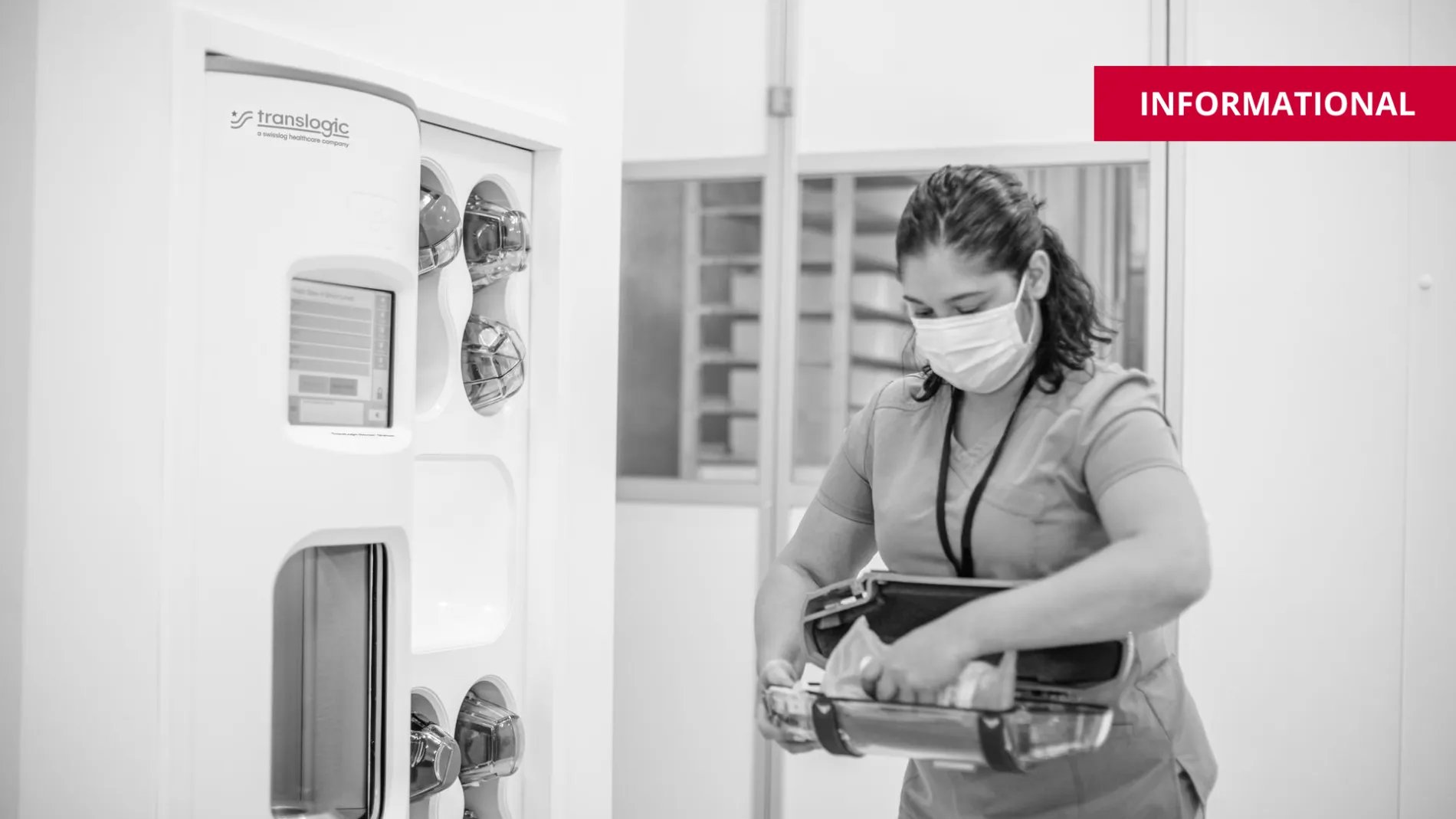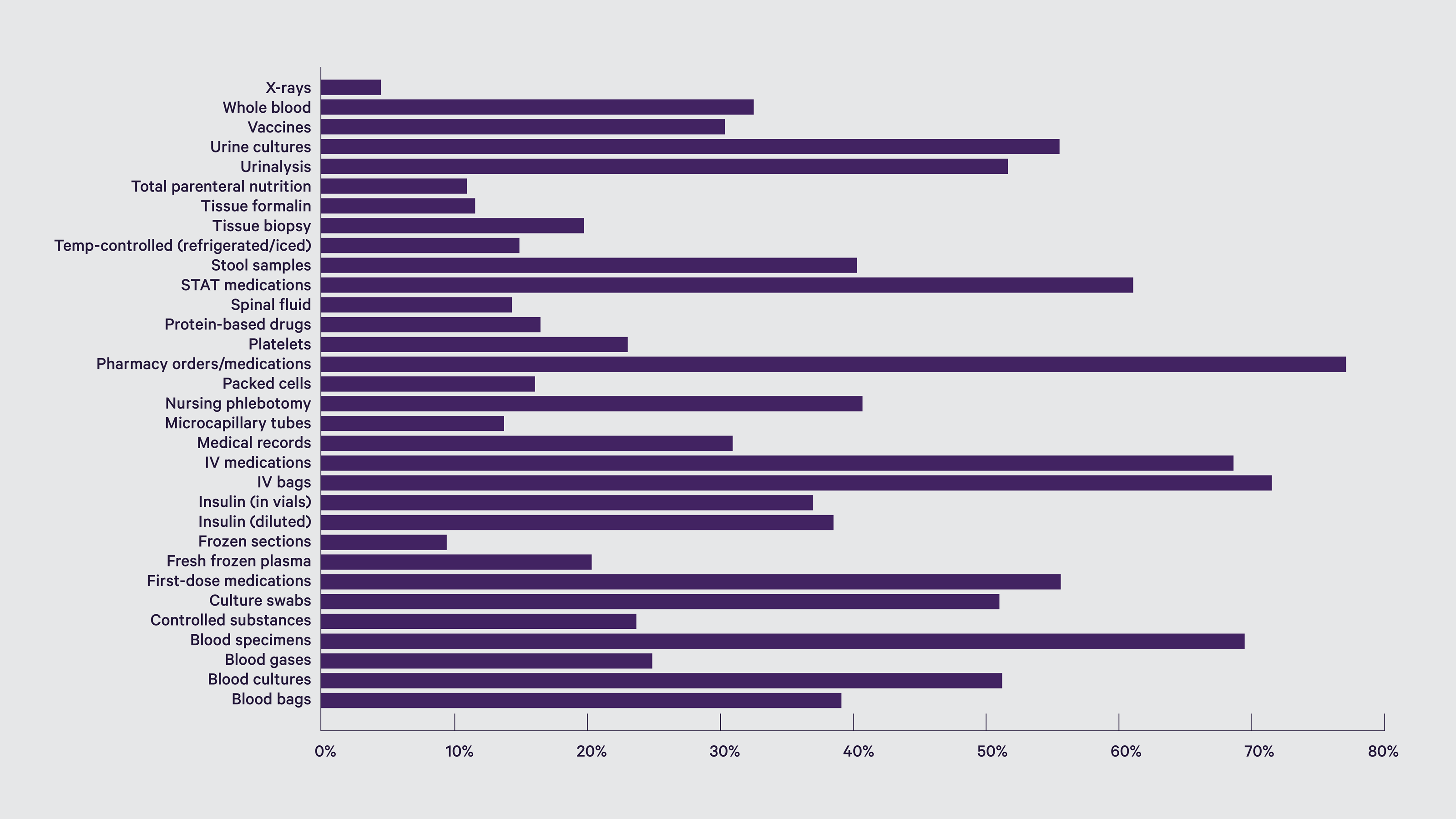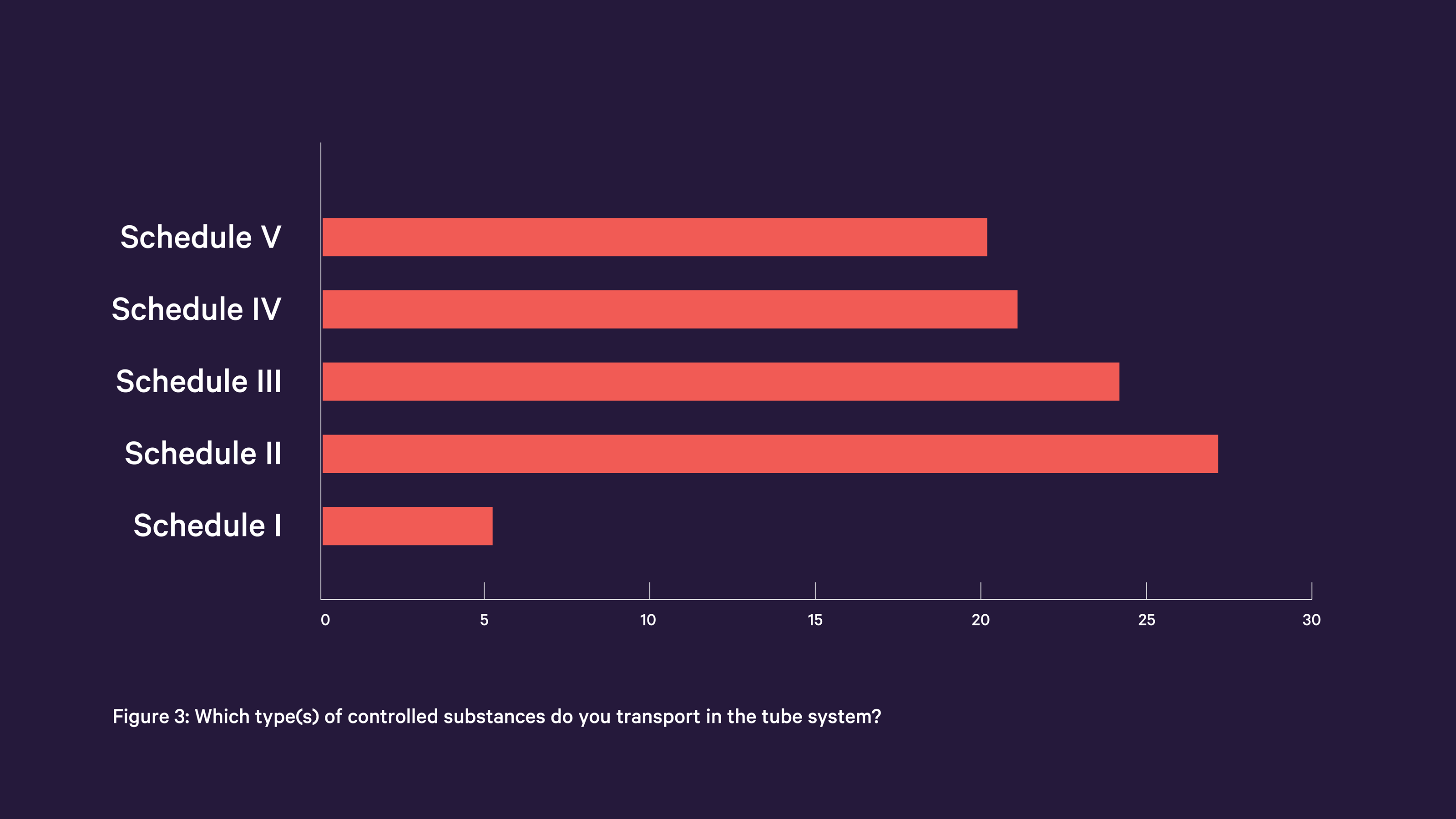You might also be interested in this


Each Hospital Has A Different Policy
Reading Time: 5 min.
2/28/2025
Scott Fincher
Hospitals typically post a “Do Not Tube” sheet on stations, noting those items that must be delivered manually, with reasons ranging from FDA restrictions to hospital policies. Because of hospital staffing pressures, we often get questions about what can and can’t be sent through the tube system, in an effort to minimize do-not-send list items.
From a physical perspective, if it fits into the carrier, doesn’t exceed eight pounds for a 6” system, and it’s properly packaged and closed, then the tube system can successfully send it to its destination. Your regional service manager can direct you to our training resources on these topics to ensure your staff properly packs and closes carriers, not overfilling them, to avoid damaging or spilling contents.
However, there’s more to it than these physical attributes, which is where a do-not-send list comes in. Items restricted by the FDA are due to concerns about maintaining the integrity of the material and must be followed. These are black-and-white decisions. Other items on a do-not-send list present some gray areas driven by hospital-specific policies. Here, TransLogic has options that you can consider as you look to maximize system utility. Let’s drill into specific examples.
Hospital A does not send liquids because of a past spill.
TransLogic’s approach to carrier packing is to offer multiple layers of protection. First is to bag the container holding the liquid either in a TransLogic pouch or another hospital-approved bag, ideally leak-resistant. Second is the use of foam inserts, to not only immobilize the contents but also provide an absorbent layer should the container and bag not be properly sealed. Third is the carrier itself. Our 6” EL carriers contain a seal, which when properly closed, will contain the spill within the carrier. Following these procedures can minimize spills and eliminate the need for manual delivery of these items.
Hospital B had a blood sample intended for the lab sent to another station instead, where it sat, undetected, requiring a re-draw.
TransLogic has a few ways to help in situations like this. First is flip timers, a standard feature with our software, where a sample will remain on the slide plate until an authorized user retrieves it using our secure send options. If not retrieved in a prescribed timeframe it will automatically be sent back to the originating station and can then be re-sent, avoiding the need to re-draw. There is also the option of segregating carriers using RFID tagging. Here a carrier is coded so that it can only be sent to and from the lab. Finally, some hospitals rely on colored carriers, red for blood for example, to help ensure samples reach the correct destination. This can be done in conjunction with RFID.
Hospital C doesn’t send blood out of concerns for sample integrity.
We are often asked to assist hospitals with blood validation, meaning they run tests to ensure samples are not compromised in transit. Proper packing, the use of whisper kits on stations and deploying of variable frequency drives (VFDs) enabling blowers to operate at variable speeds, can all help ensure sample integrity in these situations. Depending on your specific tube system, there may be other options as well.
Hospital D doesn’t send narcotics or high-dollar items due to chain-of-custody concerns.
As noted above, TransLogic offers several secure send options, including the use of station passwords, PINs, and access control badges, used with or without security doors, helping meet your chain of custody requirements.
Ultimately, each hospital must decide what’s right for them. To help you understand what’s possible, we conducted a survey with 200 customers to learn more about what they send, summarized below, including some categories you may not have expected.


How do these survey results stack up against your do not send list? Maybe there are items you can reconsider for tube system use? Your hospital installed the tube system to minimize the cost and time to deliver critical items. As labor markets tighten in healthcare, making the most of your tube system can be an effective way to help staff focus on patients care. However, it does require a thoughtful approach to do it right. To assist you in developing your tube system protocols we offer a protocol template that you and your staff can customize to meet your hospital’s needs. Contact your regional service manager for details.
Hospitals invest in tube systems because they recognize automating the ability to send material throughout the hospital makes sound business sense. Staff focus on patient care, not deliveries. We hope this information helps, as you consider your own hospital’s policies on tube system use so you get the most out of your investment.

Contact our knowledgeable specialists to discover how our range of automation solutions can boost efficiency, reduce costs and enhance care at your healthcare facility.
Contact us